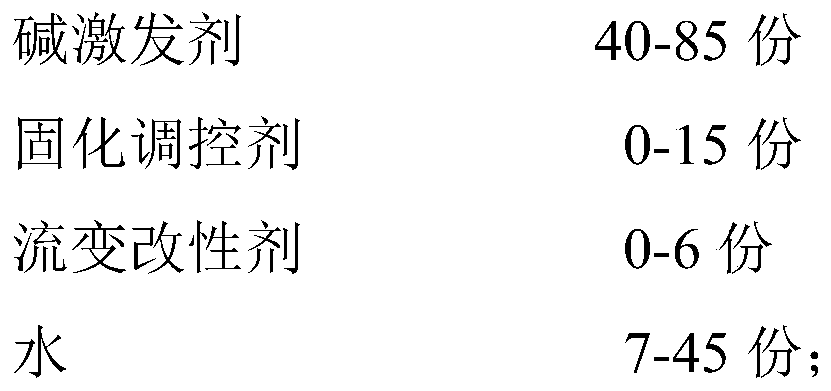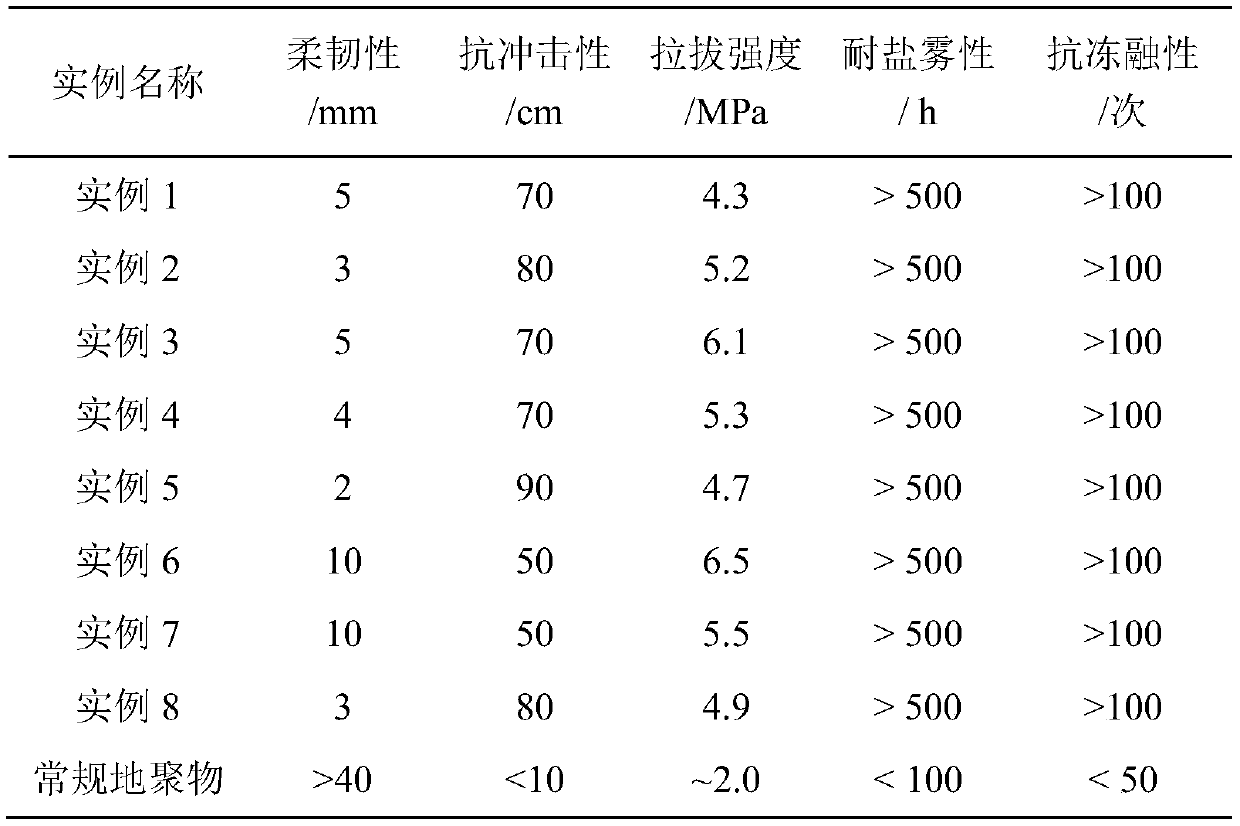Flexible geopolymer-based anticorrosive paint and preparation method and application thereof
- Summary
- Abstract
- Description
- Claims
- Application Information
AI Technical Summary
Problems solved by technology
Method used
Image
Examples
Embodiment 1
[0037] (1) Mix 30 parts of diatomaceous earth, 5 parts of titanium dioxide, 1 part of carbon black, 20 parts of talcum powder, and 44 parts of micaceous iron oxide to obtain component A;
[0038] (2) 85 parts of sodium silicate with a modulus of 3.3, 2.5 parts of curing regulator potassium hydroxide, 5.5 parts of rheology modifier bentonite, and 7 parts of water are uniformly mixed to obtain component B;
[0039] (3) Mix 50 parts of diphenyldiethoxysilane, 30 parts of phenyltrimethoxysilane and 20 parts of tetraethyl orthosilicate to obtain component C;
[0040] (4) Stir with a high-speed disperser, slowly add 52 parts by weight of component A to 28 parts by weight of component B, and then continue to add 20 parts by weight of component C to obtain a flexible geopolymer-based anti-corrosion coating.
Embodiment 2
[0042] (1) Mix 30 parts of fly ash, 35 parts of diatomaceous earth, 2 parts of iron red, 10 parts of heavy calcium carbonate, and 23 parts of glass flakes to obtain component A;
[0043] (2) 55 parts of sodium silicate with a modulus of 2.5, 3 parts of curing regulator calcium hydroxide, 0.5 part of rheology modifier fumed silica, and 41.5 parts of water are mixed uniformly to obtain component B;
[0044] (3) Mix 40 parts of methyltrimethoxysilane, 45 parts of phenyltriethoxysilane and 15 parts of octadecyltrimethoxysilane to obtain component C;
[0045] (4) Stir with a high-speed disperser, slowly add 27 parts by weight of component A to 15 parts by weight of component B, and then continue to add 58 parts by weight of component C to obtain a flexible geopolymer-based anti-corrosion coating.
Embodiment 3
[0047] (1) Mix 15 parts of kaolin, 5 parts of titanium dioxide, 1 part of carbon black, 30 parts of talcum powder, and 49 parts of quartz powder to obtain component A;
[0048] (2) 64 parts of modulus are 1.7 sodium water glass, 5 parts of curing regulator sodium hydroxide, 3 parts of rheology modifier polyamide wax, 3 parts of rheology modifier xanthan gum, 25 parts of water mix Obtain B component evenly;
[0049] (3) Mix 60 parts of methylphenyldimethoxysilane and 40 parts of butyltrimethoxysilane evenly to obtain component C;
[0050] (4) Use a high-speed disperser to stir, slowly add 60 parts by weight of A component to 28 parts by weight of B component, and then continue to add 12 parts by weight of C component to obtain a flexible geopolymer-based anti-corrosion coating.
PUM
 Login to View More
Login to View More Abstract
Description
Claims
Application Information
 Login to View More
Login to View More - R&D
- Intellectual Property
- Life Sciences
- Materials
- Tech Scout
- Unparalleled Data Quality
- Higher Quality Content
- 60% Fewer Hallucinations
Browse by: Latest US Patents, China's latest patents, Technical Efficacy Thesaurus, Application Domain, Technology Topic, Popular Technical Reports.
© 2025 PatSnap. All rights reserved.Legal|Privacy policy|Modern Slavery Act Transparency Statement|Sitemap|About US| Contact US: help@patsnap.com



